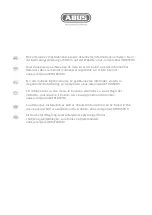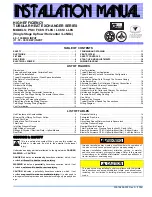
HBS 100 Verex
31
EN
1.1
Monopolar operation
In the monopolar mode, HF current is applied to the tissue using
an active electrode. The cutting or coagulation effect is caused
by a high concentration of current, i.e. a high current density over
the small surface of the active electrode. This generates an
increase in temperature, causing the water from the tissue
immediately surrounding the active electrode to vaporize.
Depending on the intensity of the HF current, this causes
bleeding to stop or generates a cut in the tissue.
The HF current flows from the active electrode to the neutral
electrode and is distributed over its large surface. This reduces
the density of the current in this area and generally prevents
unwanted thermal effects at the position of the neutral electrode.
The current flows back to the electrosurgical unit through the
neutral electrode.
1.2
Bipolar operation
In the bipolar mode, the current path is limited only to tissue
located between the two electrodes of a bipolar instrument.
Use of the neutral electrode is not necessary. Bipolar
application does not entail any risk of the current flowing
through the patient's body. Consequently there is no danger
of burns due to a poorly or incorrectly positioned neutral
electrode.
Bipolar coagulation is therefore safer than the monopolar
method and is particularly recommended for patients with
pacemakers or for operations on organs with a small
diameter.
2 Scope of delivery
HF 9503
HBS 100 Varex
HF 9979-XX
Power cable
Operating instructions in five languages
Device manual in five languages
Service manual in five languages
Summary of Contents for HBS 100 Varex
Page 2: ...HBS 100 Varex 2 DE ...
Page 28: ...HBS 100 Varex EN N ...
Page 55: ...HBS 100 Verex 55 EN ...
















































